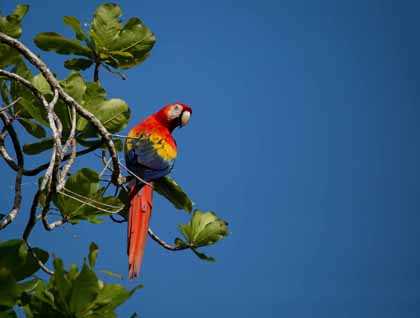After a delicious Christmas dinner and a calm soothing navigation around the Osa Peninsula on the southern pacific end of Costa Rica the National Geographic Sea Lion dropped anchor in front of what looks like a dark and mysterious forest. As the sun was breaking through the hazy clouds the shiny green color of this majestic and complex ecosystem came to life.
The words “tropical rain forest” are easy to say but the area is not easy to describe. Its complexity begins with the thousands of plants that thrive in here - their particular lifestyles allow hundreds of other species of animals to use them for food, protection, and camouflage.
The first word in this puzzle is “tropical,” referring to the location of this forest within the tropics, where the sun is present year-round impinging the ground at perpendicular angles, allowing plants to grow year-round which in turn provides food year-round which in turn lets animals have long-term lives with with no worries about migration or hibernations times.
The tropical rainforest in its purest form is full of lush, evergreen broad trees which tower to the sky, cover by hundreds other plants on them, where the rain averages 140 inches a year and the common things are rare and the rare things are common.
So, today’s outing took place in this ecosystem. The morning was spent in a private preserve name Playa Caletas where several options were offered: horseback riding, bird walks, photo walks, or a three-hour hike through the mature forest. Scarlet macaws, white-faced monkeys, hawks, falcons, trogons, hummingbirds, and iridescent blue butterflies, among so much more, were sighted at this place.
After cleaning our muddy shoes, we got back on board and the ship repositioned to our second destination of the day, Corcovado National Park. This place is the symbol of conservation for Costa Rica and one of its largest protected areas, covering close to 100,000 acres.
Corcovado is the place that if there is any chance to see special wildlife it is going to be here. So as soon as our walk began we saw spider monkeys - they are not easy to see because they live in fairly pristine undisturbed habitats. And just beside them were a troop of howler monkeys, who are much slower in their movements, and it was the perfect ending to our day.
Well, we thought that was good enough until a gorgeous couple of great curassows decided to walk back and forth showing their majestic plumage…and then, speechless, we finished our walk, came back on board, and bragged to all our guests-mates about our sightings. What a day!









